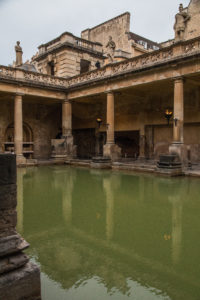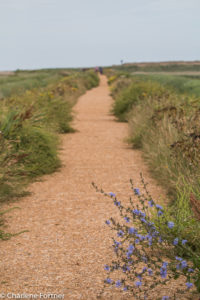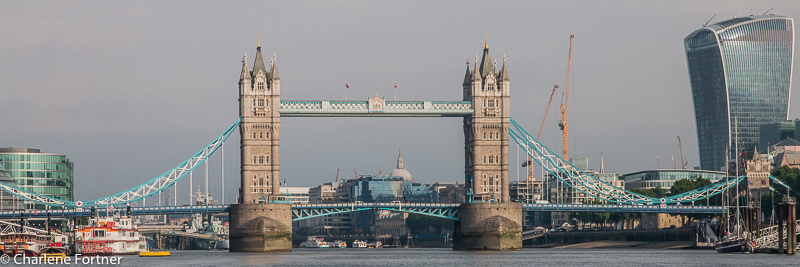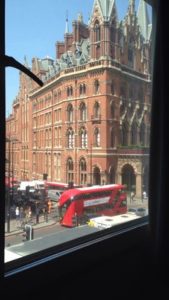To read Part 1: Logistics click here.

Castle Howard
After a week of nothing but rain, I got a small reprieve. At least the overcast clouds made for dramatic photos.
I identified seven bases for my summer travels to England: London, Oxford, Hadrian’s Wall, Lake District, York, the Norfolk Coast, and Bath. Due to transportation and lodging difficulties, I would also spend a day and a half each in Carlisle and Cambridge. Once the logistical plans were complete, major travel and lodging booked, I could sit down and make daily itineraries.
Daily Itineraries
Setting daily itineraries that account for every minute of every day are not my thing. Instead, I allow for flexibility by identifying high priority locations and selecting a few nearby places to complement them. After identifying the bases from my Google Map I began to delete locations more than 1-2 hours from each base. I was still left with many more locations than I could visit in five weeks! Narrowing the list down was a difficult and arduous process. Several key questions and criteria helped me narrow down the choices:
- Did the travel time to and from a location, along with its opening and closing times, restrict my daily schedule?
- If I could only visit one location in a day, was there enough to do to keep me occupied?
- Are the locations that appear close on the map actually that close? Would it take more than an hour to get there by walking or public transit?
- Did public transit timetables affect the time I could spend in a place? (Ex. The first bus of the day arrives at 10 am but the last pickup is at 1 pm.)
-

Blenheim Palace has some restrictions on photography inside the house. There are still plenty of places to photograph around the property.
Did the location allow photography? While I visited locations that didn’t allow photography (ex.: British Library exhibitions), this was a careful consideration when selecting sites.
- Budget: My ultimate goal was to maximize the amount of time spent overseas. Regularly going to expensive attractions would be counterproductive. Now that doesn’t mean I dismissed any attraction above an arbitrary threshold, I was just more selective. Most of the places I visited charged a fee around £5. Some charged up to £20-30, which equated to $26-40. Accommodating more expensive admission fees required sacrifices. This meant eliminating something else in my budget, pursuing discounts or committing to discounted advanced tickets and hoping the weather agreed.
Opening and Closing Times
Opening and closing times are perhaps the most frustrating part of travel, in my opinion. Most attractions I came across in England are open from 1000-1700. This is quite a narrow band if you like to visit more than two places in a day. Especially if they require travel time or if you want to take time out for lunch.
However, some attractions may extend their hours on a particular day of the week or time of the year. For example, the Roman Baths extend their hours to 2200 during the summer months and many museums in London open late one day of the week. For example, the British Museum opens late on Fridays. Looking for extended hours and incorporating them into the itinerary meant losing some flexibility. Luckily, many of these activities were indoors and would not need a backup in the event of inclement weather. Other time considerations included taking advantage of guided tours at different museums and attractions.
Travel Times
Transportation was a complicated and tricky factor to consider throughout planning each section of my trip. Travel prices greatly vary depending on the mode and time of day. Thus, transportation played a large impact on developing my itineraries.
An important consideration when visiting an attraction, particularly those out-of-town, must come down travel time. Are you spending more time getting to a location than you might spend there? This effectively eliminated many of the excursions on my short-lists. The notion of spending two hours on a bus to spend three hours at a location didn’t make economic sense. As a result, I removed locations like Stonehenge from my list. This didn’t completely discourage me from taking day trips, but if the destinations didn’t offset the cost and time of transportation I couldn’t justify going.
Walking time also had to be a consideration. While Google Maps helps calculate and give options for walking times, it was important to consider my personal walking time. This was where training for my trip came in handy! Google Maps generally calculates walking times around 3 mph, or 20-minute miles. Nowhere in my vacation did I even consider a walking speed of 3 mph! Unless the distance covered less than half a mile I generally rounded half an hour into each mile for hiking distances and 15 minutes to a city mile. At least if I ended up walking faster it gave me more time to explore a destination.
Avoid the Crowds
I hate crowds! Personal space is something to be respected! I don’t like wading through crowds of people or standing in obscenely long lines. Crowds of people in my photos are also something I like to avoid. As a result, I effectively took places like Westminster Abbey off my list.
While crowding is usually a given in most city sightseeing areas, there are usually tips provided by attraction websites or on sites like TripAdvisor on how to avoid it. When conducting research for destinations like Blenheim Palace I was able to identify when the tour buses arrive or leave. This allowed me to plan a little smarter.
Smaller Considerations
- It is also worth noting that you cannot visit most museums in just a few hours and do them justice! I researched and identified a few key galleries that I did not wish to miss and visited those first. If I had additional time, I would wander. Most people don’t enjoy spending all day in a museum, so it is best to go with a game plan.
- Sunrise & Sunset Times: As a photographer, this is something that I think about, but it is not important to all travelers. England, in the north, experiences longer days than my home. For my visit, civil twilight in London extended from 0400-2200, while in the north civil twilight extends from 0330-2300. I did research 1-2 places for city and/or landscape views at sunrise or sunset for each base of my trip. Since taking sunrise or sunset pictures would not interfere with my sightseeing times and only my sleep I wanted to attempt one sunrise or sunset shoot at each base, weather permitting. In reality, it didn’t happen. When considering architectural photography I took into account the direction of lighting at the beginning and end of the day. Directional lighting in a cathedral is more photogenic than harsh overhead light in the middle of the day. This meant looking at maps and determining the orientation of buildings to determine which cardinal direction they faced. I was able to do this with the help of Google Maps.
- Weather Back-ups. There is a phrase that rings true no matter where you visit: “there is no bad weather, only incorrect clothing.” While I don’t know who to attribute the quote, the saying is very much true. No one likes bad weather to ruin their holiday, but I think I managed to stave off most disappointment. Flexibility is the key when planning, but creating interchangeable itinerary days helps immensely when faced with unexpected weather. I grouped indoor and outdoor items together in the itinerary such as a morning outdoors and evening indoors. I also scheduled either a half or full-day free at each base. This allows for some movement of individual items or whole days in the itinerary when necessary.Unfortunately, while point-to-point hiking at Hadrian’s Wall this was not an option. Setting up time along the trail where I returned to the same lodging location enabled me to choose to take a day off if necessary.
- The last day of my trip was left totally open to allow me some freedom. I could revisit a place, visit what I missed, or do a last-minute splurge to an attraction.
- Special Events, Concerts, Tours & Exhibitions: This particular category caused my plans the most grief. Many attractions do not list complete lists of concerts, talks, and exhibitions until one or two months out. I knew I wanted to attend several particular events. I had to wait, agonizingly, until late spring to view the events calendars. Having set my itinerary early using all of the tips above, this proved to the

Last minute add-in event: Turma! Roman calvary event in Carlisle. Definitely worth the inconvenience of shifting my itinerary last-minute.
hardest consideration to accommodate. Last minute additions to my itinerary had to be carefully evaluated as to how they would interfere with my plans. Would it move another item, decrease valuable transportation time or require that another item be completely removed? Case in point, the addition of the Turma! between my bases at Hadrian’s Wall and the Lake District created a headache that was well worth the effort. Adding in the two-hour event in Carlisle meant rearranging important transportation transfers in both Carlisle and the transfer in Penrith. This meant taking the last bus from Penrith to Patterdale, which to me was risky. Other special events included concerts such as the lunchtime concerts at St. Martin-in-the-Fields in London, evensong and classical performances at Cathedrals and Churches, talks and lectures at various museums.
In the end, whatever I missed only gives me the excuse to visit again.
When, is the only question!







